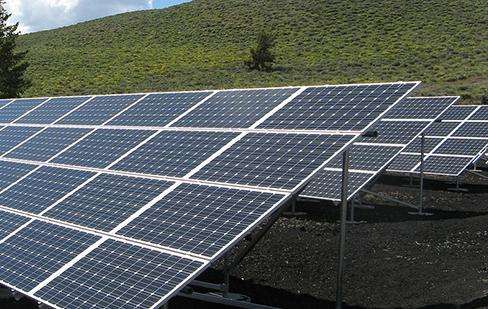The cross section of a solar panel has five layers: photovoltaic glass, EVA, solar cells, EVA and backsheet. (Tedlar film is the backsheet)
The solar cell backsheet is located on the back of the solar panel, protecting and supporting the cells, and features insulation, water resistance and reliable resistance to aging.Generally has a three-layer structure (?PVDF/PET/PVDF?), the outer protective layer ?PVDF?has good resistance to environmental erosion, and the middle layer is made of ?PET?a polyester film with good insulation performance, the inner layer of PVDF and EVA has good bonding properties.
The internal structure of solar panels and the materials of each component
Low iron tempered glass (also known as white glass) , the common thickness is about 3.2mm. In the wavelength rangeof the solar cell's spectral response (320-1100nm), the light transmittance reaches more than 90%, and it has high reflectivity for infrared light above 1200nm. This glass is also resistant to ultraviolet rays and light transmission does not decrease.
The quenching performance conforms to the national standard GB9963-88 or the impact resistance of the packaged components reaches the performance indicators specified in the national standard GB9535-88, environmental test method of solar cells in silicon on the ground. The frame is made of hard aluminum alloy, and the surface oxide layer is thicker than 10 microns, which can ensure that it can be used in outdoor environment for more than 25 years without being corroded and it is strong and durable.
Common specifications and power of solar panel components
1~200W. The minimum power increase can be 1W as parameter each time. The parameters in the following table can be used as a reference
Rated power [Pmax] 10 W
Rated power [Pmax] ±5%
Rated voltage 18 V
Lifespan 25 years The first step is single-piece soldering: solder the battery parts to the interconnect strips (tin-plated copper strips) to prepare for the series connection of the battery parts. the battery.
Lifespan 25 years. p> The second step is series welding: connect the battery parts according to a certain number are connected in series.
The third step of lamination: continue the circuit connection of battery strings, and at the same time protect the battery sheets with glass, EVA film and TPT back sheet.
The fourth step is lamination: glue and fuse the battery sheet, glass, EVA film and TPT backsheet under certain conditions of temperature, pressure and vacuum.
Step 5: Framing: Use an aluminum frame to protect the glass and make installation easier.
The sixth step of cleaning: ensuring the appearance of the components.
The seventh step of electrical performance testing: testing the insulation performance and power output of components
Finally packed and stored in warehouse.
Laminated glass solar panels: tempered glass, solar cells, EVA film, TPT back film, aluminum alloy frame, silicone, junction box, tin-plated welding tape
PET laminated solar panel: PCB base plate, solar cell sheet, EVA film, PET film, tinned solder tape
Dip glue solar panel: PCB base plate, solar cells, AB transparent resin glue, protective film, tinned soldering tape














